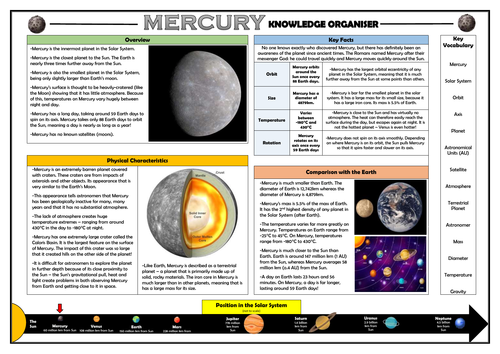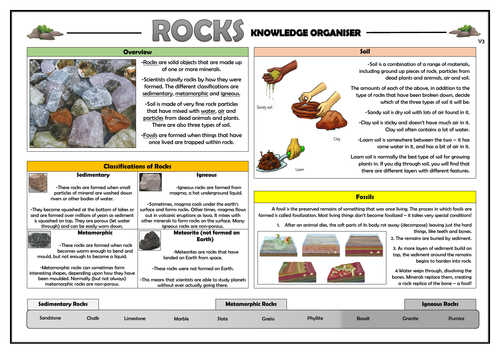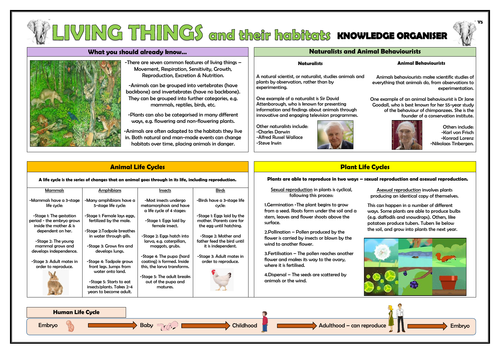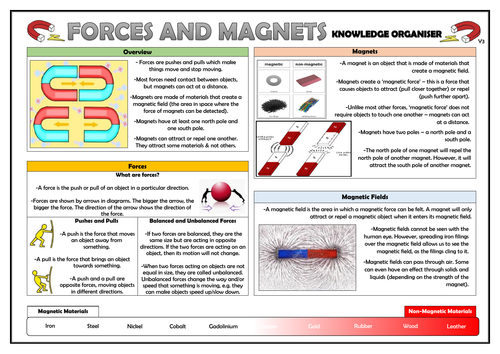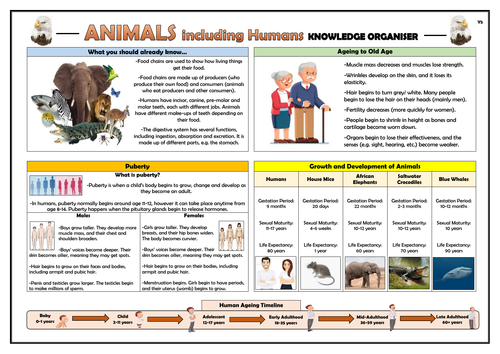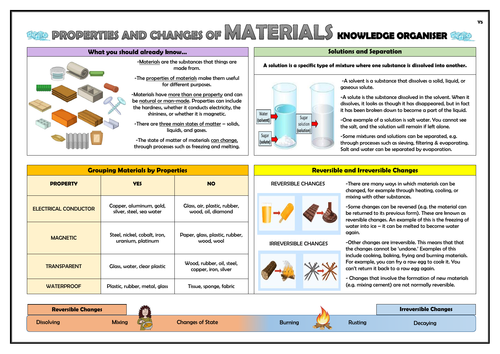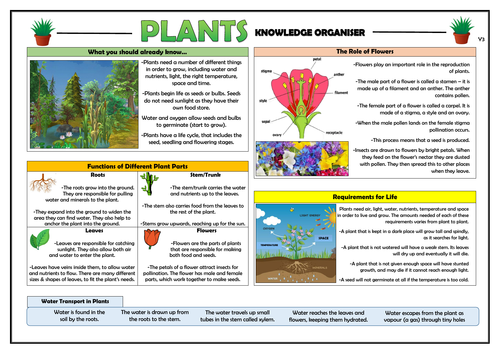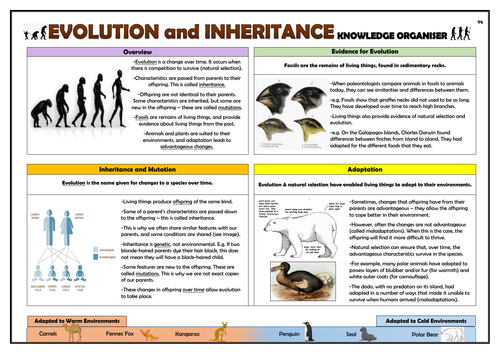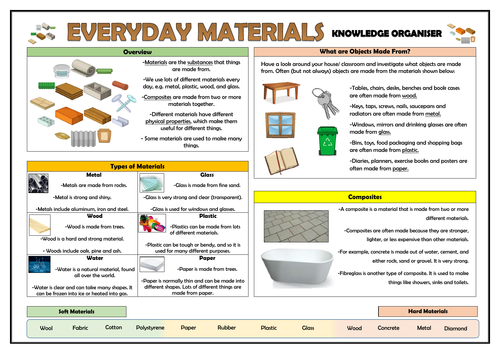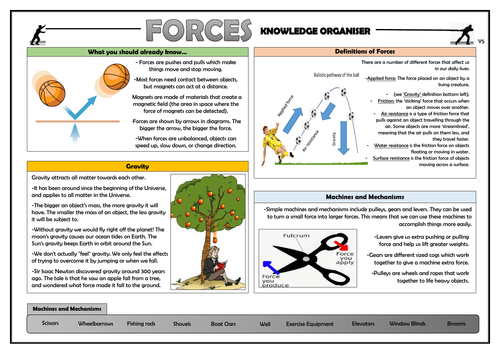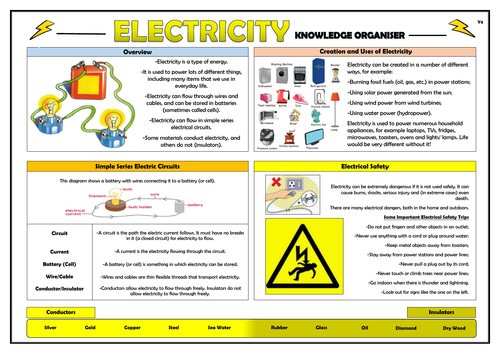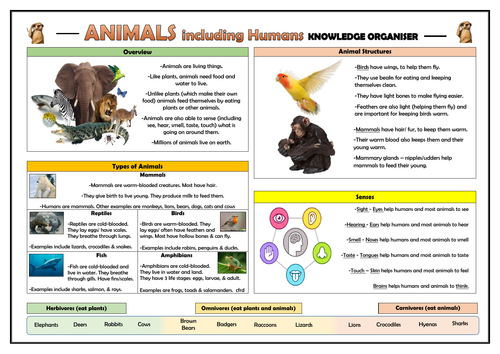
3k+Uploads
1889k+Views
2227k+Downloads
Primary science

Venus Knowledge Organiser!
This clear, detailed and visually-appealing resource offers a complete reference point for subject leaders, teachers and students building knowledge relating to the planet Venus. It contains comprehensive sections on:
Venus Overview;
Physical Characteristics;
Key Facts;
Comparison with Earth;
Important Vocabulary;
Position in the Solar System.
The resource is designed to be printed onto A4 or A3, and is provided as both a PDF and a Word version (so that you can edit if you want to). All images used are licensed for commercial use and are cited on a separate document (included).

Mercury Knowledge Organiser!
This clear, detailed and visually-appealing resource offers a complete reference point for subject leaders, teachers and students building knowledge relating to the planet Mercury. It contains comprehensive sections on:
Mercury Overview;
Physical Characteristics;
Key Facts;
Comparison with Earth;
Important Vocabulary;
Position in the Solar System.
The resource is designed to be printed onto A4 or A3, and is provided as both a PDF and a Word version (so that you can edit if you want to). All images used are licensed for commercial use and are cited on a separate document (included).

Year 3 Rocks Knowledge Organiser!
This clear, detailed and visually-appealing resource offers a complete reference point for Year 3 children, teachers and parents covering knowledge relating to ‘Rocks’, as a part of their science learning. It contains comprehensive sections on:
Overview;
Classifications of Rocks;
Soil;
Fossils;
Examples of Types of Rocks;
Key Vocabulary.
The content is fully aligned with the NC expectations for Year 3 children relating to ‘Rocks’:
-compare and group together different kinds of rocks on the basis of their appearance and simple physical properties;
-describe in simple terms how fossils are formed when things that have lived are
trapped within rock;
-recognise that soils are made from rocks and organic matter.
The resource is designed to be printed onto A3, and is provided as both a PDF and a Word version (so that you can edit if you want to). All images used are licensed for commercial use and are cited on a separate document (included).

Investigating Light - Two Non-Fiction Reading Comprehension Sessions!
These whole class reading sessions aim to develop children’s fluency and comprehension skills, whilst enabling them to gain a deeper understanding of light, through reading a comprehensive age-appropriate non-fiction text investigating the nature and properties of light. The text aligns with the upper KS2 curriculum expectations for light.
The reading is followed by a series of activities aiming to develop children’s retrieval, explanation, inference, prediction and summarising skills. It also contains a vocabulary check immediately after the extract is read to clarify any unfamiliar/ difficult language.
The tasks are comprised of quick-check questions, solo thinking, pair/ group discussions and deeper thinking activities. The text is well-presented, clear and informative and is freely available on Epic (the link to the text is hyperlinked into the first slide of both PowerPoint presentations).
The session is best suited for children in years 4-6 although with suitable adaptations it could feasibly be used with slightly younger and older year groups.

Year 5 Living Things and their Habitats Knowledge Organiser!
This clear, detailed and visually-appealing resource offers a complete reference point for Year 5 children, teachers and parents covering knowledge relating to ‘Living things and their habitats’, as a part of their science learning. It contains comprehensive sections on:
What you should already know (from learning in earlier years);
Animal Life Cycles;
Plant Life Cycles;
Habitat Changes;
Naturalists and Animal Behaviourists;
Key Vocabulary.
The content is fully aligned with the NC expectations for Year 5 children relating to ‘Living things and their habitats’:
-Describe the differences in the life cycles of a mammal, an amphibian, an insect and a bird;
-Describe the life process of reproduction in some plants and animals.
The resource is designed to be printed onto A3, and is provided as both a PDF and a Word version (so that you can edit if you want to). All images used are licensed for commercial use and are cited on a separate document (included).

Year 3 Forces and Magnets Knowledge Organiser!
This clear, detailed and visually-appealing resource offers a complete reference point for Year 3 children, teachers and parents covering knowledge relating to ‘Light’, as a part of their science learning. It contains comprehensive sections on:
Overview;
Forces (Pushes, Pulls, Balanced and Unbalanced Forces);
Magnets;
Magnetic Fields;
Magnetic and Non-Magnetic Objects;
Key Vocabulary.
The content is fully aligned with the NC expectations for Year 3 children relating to ‘Forces and Magnets’:
-Compare how things move on different surfaces;
-Notice that some forces need contact between two objects, but magnetic forces can act at a distance;
-Observe how magnets attract or repel each other and attract some materials and not others;
-Compare and group together a variety of everyday materials on the basis of whether they are attracted to a magnet, and identify some magnetic materials;
-Describe magnets as having two poles;
-Predict whether two magnets will attract or repel each other, depending on which
poles are facing.
The resource is designed to be printed onto A3, and is provided as both a PDF and a Word version (so that you can edit if you want to). All images used are licensed for commercial use and are cited on a separate document (included).

Year 6 Animals including Humans Knowledge Organiser!
This clear, detailed and visually-appealing resource offers a complete reference point for Year 6 children, teachers and parents covering knowledge relating to ‘Animals including Humans’, as a part of their science learning. It contains comprehensive sections on:
Overview and ‘what you should already know’ (from their prior learning);
Impact of Diet, Exercise and Drugs;
Water Transportation through the Body;
The Circulatory System;
The Heart;
Key Vocabulary (underlined).
The content is fully aligned with the NC expectations for Year 6 children relating to ‘Animals including Humans:’
-identify and name the main parts of the human circulatory system, and describe the functions of the heart, blood vessels and blood;
recognise the impact of diet, exercise, drugs and lifestyle on the way their bodies
function;
-describe the ways in which nutrients and water are transported within animals,
including humans.
The resource is designed to be printed onto A3, and is provided as both a PDF and a Word version (so that you can edit if you want to). All images used are licensed for commercial use and are cited on a separate document (included).

Year 5 Animals including Humans Knowledge Organiser!
This clear, detailed and visually-appealing resource offers a complete reference point for Year 5 children, teachers and parents covering knowledge relating to ‘Animals including Humans’, as a part of their science learning. It contains comprehensive sections on:
Overview and ‘what you should already know’ (from their prior learning);
Puberty;
Human Ageing Timeline;
Ageing towards Old Age;
Growth and Development of Animals;
Key Vocabulary (underlined).
The content is fully aligned with the NC expectations for Year 5 children relating to ‘Animals including Humans:’
-describe the changes as humans develop to old age;
-learn about stages in the growth and development of humans. They should learn about the changes experienced in puberty;
-research the gestation periods of other animals and compare them with humans.
The resource is designed to be printed onto A3, and is provided as both a PDF and a Word version (so that you can edit if you want to). All images used are licensed for commercial use and are cited on a separate document (included).

Year 5 Properties and Changes of Materials Knowledge Organiser!
This clear, detailed and visually-appealing resource offers a complete reference point for Year 5 children, teachers and parents covering knowledge relating to ‘Properties and Changes of Materials’, as a part of their science learning. It contains comprehensive sections on:
What you should already know (from learning in earlier years);
Grouping Materials by Properties;
Solutions and Separation;
Reversible and Irreversible Changes;
Types of Reversible and Irreversible Changes;
Key Vocabulary.
The content is fully aligned with the NC expectations for Year 5 children relating to ‘Properties and Changes of Materials’:
-Compare and group together everyday materials on the basis of their properties,
including their hardness, solubility, transparency, conductivity (electrical and
thermal), and response to magnets;
-Know that some materials will dissolve in liquid to form a solution, and describe how to recover a substance from a solution;
-Use knowledge of solids, liquids and gases to decide how mixtures might be
separated, including through filtering, sieving and evaporating;
-Give reasons, based on evidence from comparative and fair tests, for the particular
uses of everyday materials, including metals, wood and plastic;
-Demonstrate that dissolving, mixing and changes of state are reversible changes;
-Explain that some changes result in the formation of new materials, and that this kind of change is not usually reversible, including changes associated with burning and the action of acid on bicarbonate of soda.
The resource is designed to be printed onto A3, and is provided as both a PDF and a Word version (so that you can edit if you want to). All images used are licensed for commercial use and are cited on a separate document (included).

Year 4 Living Things and their Habitats Knowledge Organiser!
This clear, detailed and visually-appealing resource offers a complete reference point for Year 4 children, teachers and parents covering knowledge relating to ‘Living things and their habitats’, as a part of their science learning. It contains comprehensive sections on:
What you should already know (from learning in earlier years);
Classification of Animals;
Classification of Plants;
Habitat Changes;
Vertebrates and Invertebrates;
Key Vocabulary.
The content is fully aligned with the NC expectations for Year 4 children relating to ‘Living things and their habitats’:
-Recognise that living things can be grouped in a variety of ways;
-Explore and use classification keys to help group, identify and name a variety of living things in their local and wider environment;
-Recognise that environments can change and that this can sometimes pose dangers to living things.
The resource is designed to be printed onto A3, and is provided as both a PDF and a Word version (so that you can edit if you want to). All images used are licensed for commercial use and are cited on a separate document (included).

Year 3 Plants Knowledge Organiser!
This clear, detailed and visually-appealing resource offers a complete reference point for Year 3 children, teachers and parents covering knowledge relating to ‘Plants’, as a part of their science learning. It contains comprehensive sections on:
What you should already know (from earlier learning);
Functions of Plant Parts;
The Role of Flowers (including pollination);
Plant Requirements for Life;
Water Transport in Plants;
Key Vocabulary.
The content is fully aligned with the NC expectations for Year 3 children relating to ‘Plants’:
-identify and describe the functions of different parts of flowering plants: roots,
stem/trunk, leaves and flowers
-explore the requirements of plants for life and growth (air, light, water, nutrients from
soil, and room to grow) and how they vary from plant to plant
-investigate the way in which water is transported within plants
-explore the part that flowers play in the life cycle of flowering plants, including
pollination, seed formation and seed dispersal.
The resource is designed to be printed onto A3, and is provided as both a PDF and a Word version (so that you can edit if you want to). All images used are licensed for commercial use and are cited on a separate document (included).

Year 6 Evolution and Inheritance Knowledge Organiser!
This clear, detailed and visually-appealing resource offers a complete reference point for Year 6 children, teachers and parents covering knowledge relating to ‘Evolution and Inheritance’, as a part of their science learning. It contains comprehensive sections on:
Overview;
Inheritance and Mutation;
Evidence of Evolution;
Adaptation;
Animal Adaptations;
Key Vocabulary (underlined).
The content is fully aligned with the NC expectations for Year 6 children relating to ‘Evolution and Inheritance:’
-Recognise that living things have changed over time and that fossils provide
information about living things that inhabited the Earth millions of years ago;
-Recognise that living things produce offspring of the same kind, but normally offspring vary and are not identical to their parents;
-Identify how animals and plants are adapted to suit their environment in different
ways and that adaptation may lead to evolution.
The resource is designed to be printed onto A3, and is provided as both a PDF and a Word version (so that you can edit if you want to). All images used are licensed for commercial use and are cited on a separate document (included).

Year 1 Everyday Materials Knowledge Organiser!
This clear, detailed and visually-appealing resource offers a complete reference point for Year 1 children, teachers and parents covering knowledge relating to ‘Everyday Materials’, as a part of their science learning. It contains comprehensive sections on:
Overview;
Types of Materials;
What are Objects Made from?
Composites;
Soft/Hard Materials Continuum;
Key Vocabulary (underlined).
The content is fully aligned with the NC expectations for Year 1 children relating to ‘Everyday Materials:’
-distinguish between an object and the material from which it is made
-identify and name a variety of everyday materials, including wood, plastic, glass,
metal, water, and rock
-describe the simple physical properties of a variety of everyday materials
-compare and group together a variety of everyday materials on the basis of their
simple physical properties.
The resource is designed to be printed onto A3, and is provided as both a PDF and a Word version (so that you can edit if you want to). All images used are licensed for commercial use and are cited on a separate document (included).

Year 4 Animals Including Humans Knowledge Organiser!
This clear, detailed and visually-appealing resource offers a complete reference point for Year 4 children, teachers and parents covering knowledge relating to ‘Animals including Humans’, as a part of their science learning. It contains comprehensive sections on:
Overview and ‘what you should already know’ (from their prior learning);
Food Chains Explanation and Key Terms;
Example Food Chains;
Teeth;
The Digestive System;
Key Vocabulary (underlined).
The content is fully aligned with the NC expectations for Year 4 children relating to ‘Animals including Humans:’
-describe the simple functions of the basic parts of the digestive system in humans
-identify the different types of teeth in humans and their simple functions
-construct and interpret a variety of food chains, identifying producers, predators and prey.
The resource is designed to be printed onto A3, and is provided as both a PDF and a Word version (so that you can edit if you want to). All images used are licensed for commercial use and are cited on a separate document (included).

Year 5 Forces Knowledge Organisers!
This clear, detailed and visually-appealing resource offers a complete reference point for Year 5 children, teachers and parents covering knowledge relating to ‘Forces’, as a part of their science learning. It contains comprehensive sections on:
What you should already know (from prior learning);
Gravity;
Definition of Forces;
Machines and Mechanisms;
Types of Machines and Mechanisms;
Key Vocabulary.
The content is fully aligned with the NC expectations for Year 5 children relating to ‘Forces’:
-explain that unsupported objects fall towards the Earth because of the force of
gravity acting between the Earth and the falling object;
-identify the effects of air resistance, water resistance and friction, that act between moving surfaces;
-recognise that some mechanisms, including levers, pulleys and gears, allow a
smaller force to have a greater effect.
The resource is designed to be printed onto A3, and is provided as both a PDF and a Word version (so that you can edit if you want to). All images used are licensed for commercial use and are cited on a separate document (included).

Year 4 Electricity Knowledge Organiser!
This clear, detailed and visually-appealing resource offers a complete reference point for Year 4 children, teachers and parents covering knowledge relating to ‘Electricity’, as a part of their science learning. It contains comprehensive sections on:
Overview;
Simple Series Electric Circuits;
Creation and Uses of Electricity;
Electrical Safety;
Conductors and Insulators;
Key Vocabulary.
The content is fully aligned with the NC expectations for Year 4 children relating to ‘Electricity’:
-identify common appliances that run on electricity;
-construct a simple series electrical circuit, identifying and naming its basic parts,
including cells, wires, bulbs, switches and buzzers;
-identify whether or not a lamp will light in a simple series circuit, based on whether or not the lamp is part of a complete loop with a battery;
-recognise that a switch opens and closes a circuit and associate this with whether or not a lamp lights in a simple series circuit;
recognise some common conductors and insulators, and associate metals with being good conductors.
The resource is designed to be printed onto A3, and is provided as both a PDF and a Word version (so that you can edit if you want to). All images used are licensed for commercial use and are cited on a separate document (included).

Year 6 Light Knowledge Organiser!
This clear, detailed and visually-appealing resource offers a complete reference point for Year 6 children, teachers and parents covering knowledge relating to ‘Light’, as a part of their science learning. It contains comprehensive sections on:
Overview;
How We See Things;
How Light Travels;
Our Eyes;
Light Spectrum;
Key Vocabulary (underlined).
The content is fully aligned with the NC expectations for Year 6 children relating to ‘Light:’
-Recognise that light appears to travel in straight lines;
-Use the idea that light travels in straight lines to explain that objects are seen
because they give out or reflect light into the eye;
-Explain that we see things because light travels from light sources to our eyes or
from light sources to objects and then to our eyes;
-Use the idea that light travels in straight lines to explain why shadows have the same shape as the objects that cast them.
The resource is designed to be printed onto A3, and is provided as both a PDF and a Word version (so that you can edit if you want to). All images used are licensed for commercial use and are cited on a separate document (included).

Year 6 Living Things and their Habitats Knowledge Organiser!
This clear, detailed and visually-appealing resource offers a complete reference point for Year 6 children, teachers and parents covering knowledge relating to ‘Living things and their habitats’, as a part of their science learning. It contains comprehensive sections on:
What you should already know (from learning in earlier years);
In-depth Classification of Animals;
Linnaeus Classification;
Classification in Habitats;
Classification of Humans;
Key Vocabulary.
The content is fully aligned with the NC expectations for Year 6 children relating to ‘Living things and their habitats’:
-Describe how living things are classified into broad groups according to common
observable characteristics and based on similarities and differences, including microorganisms, plants and animals;
-Give reasons for classifying plants and animals based on specific characteristics.
The resource is designed to be printed onto A3, and is provided as both a PDF and a Word version (so that you can edit if you want to). All images used are licensed for commercial use and are cited on a separate document (included).

Year 3 Light Knowledge Organiser!
This clear, detailed and visually-appealing resource offers a complete reference point for Year 3 children, teachers and parents covering knowledge relating to ‘Light’, as a part of their science learning. It contains comprehensive sections on:
Overview;
Light Key Terms;
Transparent, Translucent and Opaque;
Protection from Light;
Objects that Transmit Light;
Key Vocabulary.
The content is fully aligned with the NC expectations for Year 3 children relating to ‘Light’:
-recognise that they need light in order to see things and that dark is the absence of
light
-notice that light is reflected from surfaces
-recognise that light from the sun can be dangerous and that there are ways to protect their eyes
-recognise that shadows are formed when the light from a light source is blocked by
an opaque object
-find patterns in the way that the size of shadows change.
The resource is designed to be printed onto A3, and is provided as both a PDF and a Word version (so that you can edit if you want to). All images used are licensed for commercial use and are cited on a separate document (included).

Year 1 Animals including Humans Knowledge Organiser!
This clear, detailed and visually-appealing resource offers a complete reference point for Year 1 children, teachers and parents covering knowledge relating to ‘Animals including Humans’, as a part of their science learning. It contains comprehensive sections on:
Overview;
Types of Animals (mammals, reptiles, amphibians, birds and fish);
Herbivores, Carnivores and Omnivores;
Comparing Animal Structures;
Senses;
Key Vocabulary (underlined).
The content is fully aligned with the NC expectations for Year 1 children relating to ‘Animals including Humans:’
-identify and name a variety of common animals including fish, amphibians, reptiles,
birds and mammals
-identify and name a variety of common animals that are carnivores, herbivores and
omnivores
-describe and compare the structure of a variety of common animals (fish,
amphibians, reptiles, birds and mammals, including pets)
identify, name, draw and label the basic parts of the human body and say which part of the body is associated with each sense.
The resource is designed to be printed onto A3, and is provided as both a PDF and a Word version (so that you can edit if you want to). All images used are licensed for commercial use and are cited on a separate document (included).


